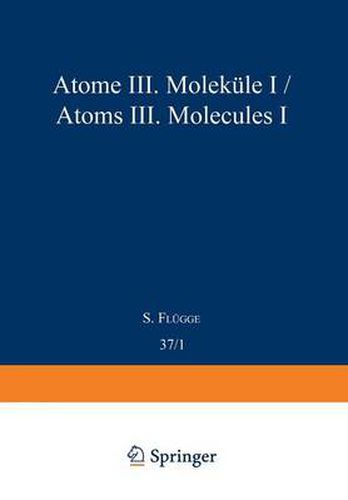Readings Newsletter
Become a Readings Member to make your shopping experience even easier.
Sign in or sign up for free!
You’re not far away from qualifying for FREE standard shipping within Australia
You’ve qualified for FREE standard shipping within Australia
The cart is loading…






This title is printed to order. This book may have been self-published. If so, we cannot guarantee the quality of the content. In the main most books will have gone through the editing process however some may not. We therefore suggest that you be aware of this before ordering this book. If in doubt check either the author or publisher’s details as we are unable to accept any returns unless they are faulty. Please contact us if you have any questions.
dissociation, E, of a dimer into two monomers and that, E’, of a trimer into a dimer and a monomer. The observed velocity distribution for a beam of sodium iodide is shown in Fig. 23. The monomer and dimer distributions, which are each of the form of Eq. (9. 2), are separately shown. The sum of the two assumed distributions is seen to agree with the experimental data. The data for lithium bromide are shown in Fig. 24. The separate distributions for the monomer, dimer, and trimer required to fit the data are shown as is the sum of these distributions. An attempt to describe the observed distribution in terms of a monomer and a dimer only is shown by the dotted line, where the relative amounts of these species have been adjusted to give a fit on the low velocity side of the spectrum. Table 2. Summary oj data on the degree of association oj diatomic molecules. The data on the fluorides are from unpublished results of M. EISENSTADT, G. ROTHBERG and P. KUSCH. Uncertainties in E and E’ are given in parentheses. E E’ Temperature OK I —– —- Species at which a2 a, kcaljmole p~10-2mmHg RbCl 866 0. 063 48. 0 (0. 5) I KCI 0. 083 897 45*8 (0. 7) I KI 823 0. 046 , 45*3 (0*9) NaC] 920 0. 259 44. 6 (0*9) i NaI 817 0. 235 38. 6 (3-4) LiC] 2.
$9.00 standard shipping within Australia
FREE standard shipping within Australia for orders over $100.00
Express & International shipping calculated at checkout
This title is printed to order. This book may have been self-published. If so, we cannot guarantee the quality of the content. In the main most books will have gone through the editing process however some may not. We therefore suggest that you be aware of this before ordering this book. If in doubt check either the author or publisher’s details as we are unable to accept any returns unless they are faulty. Please contact us if you have any questions.
dissociation, E, of a dimer into two monomers and that, E’, of a trimer into a dimer and a monomer. The observed velocity distribution for a beam of sodium iodide is shown in Fig. 23. The monomer and dimer distributions, which are each of the form of Eq. (9. 2), are separately shown. The sum of the two assumed distributions is seen to agree with the experimental data. The data for lithium bromide are shown in Fig. 24. The separate distributions for the monomer, dimer, and trimer required to fit the data are shown as is the sum of these distributions. An attempt to describe the observed distribution in terms of a monomer and a dimer only is shown by the dotted line, where the relative amounts of these species have been adjusted to give a fit on the low velocity side of the spectrum. Table 2. Summary oj data on the degree of association oj diatomic molecules. The data on the fluorides are from unpublished results of M. EISENSTADT, G. ROTHBERG and P. KUSCH. Uncertainties in E and E’ are given in parentheses. E E’ Temperature OK I —– —- Species at which a2 a, kcaljmole p~10-2mmHg RbCl 866 0. 063 48. 0 (0. 5) I KCI 0. 083 897 45*8 (0. 7) I KI 823 0. 046 , 45*3 (0*9) NaC] 920 0. 259 44. 6 (0*9) i NaI 817 0. 235 38. 6 (3-4) LiC] 2.